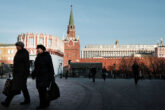July 12, 2018
NATO in the Age of Trump
What It Can and Can’t Accomplish Absent U.S. Leadership
Few NATO summits have captured the attention of this one—but for all the wrong reasons. On July 11, 29 heads of state and government will arrive at the new NATO headquarters building in Brussels. All eyes will be on U.S. President Donald Trump, looking for the slightest sign that a repeat of the chaos at this year’s G-7 meeting is in the making. Such a distraction from what will be a substantive NATO agenda is a pity. There is real work going on within the alliance as it continues its rush to shore up deterrence against further Russian aggression in the east, takes on a greater counterterrorism role in Iraq, and works to counter new threats in the cybersphere
SUMMITS PAST AND PRESENT
Over the past four years, there has been no letup in the almost frantic NATO preparation for possible conflict on the European continent. Four months after being caught flatfooted by the Russian seizure of Crimea, NATO approved the base-line Readiness Action Plan at the 2014 Wales summit. The plan included a continuous air, land, and maritime presence across the NATO frontier with Russia. Among other initiatives, the alliance increased the size and readiness of the NATO Response Force and established a subcomponent called the Very High Readiness Joint Task Force, composed of about 5,000 troops provided by a rotation of allies with maritime, special operations, and aviation units that can deploy to a crisis within two or three days. In addition, the Wales summit established eight multinational NATO Force Integration Units in the east to help train troops and receive reinforcements in a crisis.
Most notably, it was at Wales that NATO allies signed on to the Defense Investment Pledge, an agreement “to reverse the trend of declining defense budgets, to make the most effective use of our funds and to further a more balanced sharing of costs and responsibilities.” To operationalize this pledge, member states lagging in defense spending made the heavily caveated commitment to halt any further budgetary declines and aim instead to increase defense expenditures in real terms as GDP grows and move toward NATO’s two percent target.
Read the Full Article at Foreign Affairs
More from CNAS
-
Ukraine Negotiations: Prospects and Pitfalls of Peace
This week Brussels Sprouts breaks down the latest negotiations on Ukraine. American officials told reporters that they had resolved or closed gaps around 90 percent of their d...
By Andrea Kendall-Taylor & Jim Townsend
-
Can the Global Order Be Saved? Not Without Punishing Russia
The only way to succeed in the urgent task of achieving a just peace settlement, therefore, is radically reshaping Russia’s calculus....
By Nicholas Lokker
-
CNAS Insights | Russia Is Winning the Battle for Influence in Nigeria
Across Africa, Russia and its proxies are well known for providing security and extracting wealth. In the Sahel the Wagner Group, and subsequently the Russian Defense Ministry...
By Kate Johnston
-
Transatlantic Tensions in the New National Security Strategy
On December 4th, the Trump administration released its long-awaited national security strategy, sending another round of shock waves through the transatlantic community. The N...
By Andrea Kendall-Taylor & Jim Townsend




